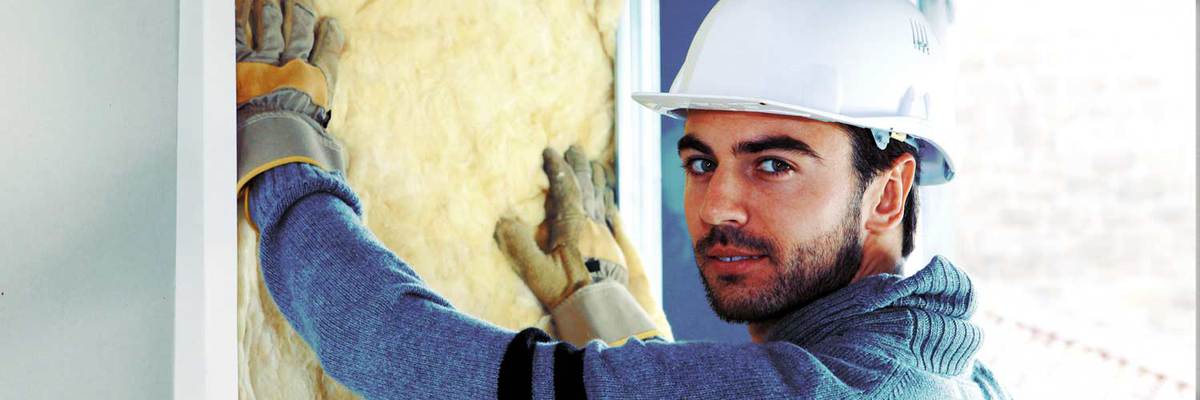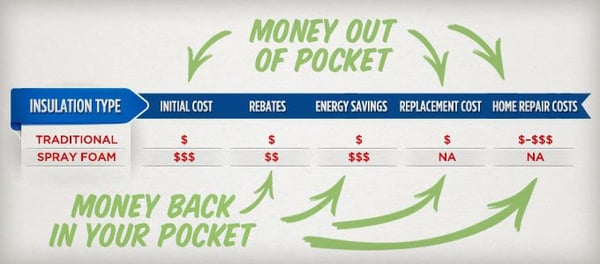Buying Cheap Home Insulation? Consider These 7 Things Before You Sign the Contract


Buying home insulation can be hard when you’re trying to do it on a budget.
Those cheaper prices for insulation are definitely tempting, but you also get what you pay for and cheaper isn’t always better.
As a project manager here at RetroFoam of Michigan, I talk about this a lot with homeowners. Foam insulation isn’t the cheapest option, so we have a real conversation about that cost compared to fiberglass or cellulose.
There are things to consider like performance and what time can do to the cheaper options, and I will get into all of that below.
Why Cheap Home Insulation Isn’t Always Better
If you get pulled in by the cheaper price tag of traditional insulation, it’s easy to overlook some of the cost issues that come with it.
There are issues that pop up with traditional insulation, but they don’t hit you in the pocket quite like these ones do.
- Air leakage in your home. I’m sure you’re wondering how air leakage can cost you money, but it does because it leads to two other challenges listed below – wear and tear on your mechanicals and high energy bills. If you can’t maintain a constant temperature in your home because air is leaking in and out, then you’ll end up paying for it one way or another.
- Replacement cost for fiberglass and cellulose. You think when you buy insulation it should be a one and done kind of deal, but it’s not. Over time, both fiberglass and cellulose will break down, shift, settle, or sag. This means it’s leaving you with air gaps and you’ll end up having to replace it at some point down the road. Not to mention that cellulose has to be raked and maintained regularly.
- Moisture issues can lead to costly problems. With air movement through traditional insulation comes condensation. When warm air meets cold air, condensation forms. Both fiberglass and cellulose can retain that moisture, which in some cases will be held in the material and against the wood framing in your home. This can lead to structural damage and the formation of mold.
- Pest control costs when insulation becomes critter condos. Pests are feeling around the outside of your home looking for air leaks. This tells them there is an open door to come on in and get comfortable. The gaps in your insulation was an open invite, now you’ll have to pay someone to come in to clear out the pests and any messes they left behind. This also leads to the traditional insulation needing to be replaced.
- Added maintenance cost from the furnace and air conditioner running constantly. You know the saying “work smarter, not harder” is true in life and for your air conditioner and furnace. If air is leaking in your home, these appliances have to work twice as hard just to maintain a constant temperature. This leads to more money out of your pocket for maintenance costs.
- High monthly energy bills. You add insulation to your home in hopes of making it more comfortable and not having to use your AC unit or furnace as much. As long as the traditional insulation you choose still allows for air movement, those mechanicals are going to continue to work overtime. The more they have to work, the more you end up paying, unless you opt to be uncomfortable all the time to avoid the heat and air conditioning.
- Poor air quality in the home. If you have seasonal allergies, choosing insulation that still allows for air movement through it could also cost you money. Those allergens get trapped inside materials like fiberglass, which could lead to more reactions for you or your family and more money on allergy medicine or inhalers.
The Best Insulation for Homes
Insulation in your home is important because it can make it a comfortable place year-round.
The insulation in your home should reduce heat loss or heat gain as it creates another layer between your living space and the outside environment. Not all insulations perform the same when it comes to keeping air leaks to a minimum. Check out this graphic below.

Like I said before, foam insulation is more expensive in initial costs when compared to traditional options, but it’s the only material that creates an air seal in your home that saves you money in the long run. That same air seal is keeping your conditioned air inside and the outside air out.
If I go to the gas station and get coffee, I am putting it in a foam cup to keep that heat in. In the summer, I’m putting my fountain soda in the same foam cup to keep it cool.
Foam insulation in your home works the same way as that cup and it saves you money.
What I tell people is that heating and cooling bills don’t go away. You can pay off your car, house, and property, but you’ll always have to pay those heating and cooling costs. You can’t go without those costs and live comfortably in your home.
You spend a lot of time in your home, so you need it to be comfortable and energy efficient. Choosing insulation that can make all of this a reality is important, and sometimes that comes with the higher initial price tag.
It also comes with peace of mind knowing your foam insulation is blocking any outside air and allergens from getting inside, it will last the lifetime of your home, and it will save you money.
Over time foam insulation pays for itself putting a little whip in your hip every month with the added savings from your monthly energy bills.
If you’re trying to decide on insulation based only on the cost, I really encourage you to take a look back at these factors that could end up costing you money as they will have long-lasting impacts on your home.
Related Articles
The Total Lifetime Cost of Foam Insulation: It’s Less Than You Think
How to Plan and Pay for Your Foam Insulation Cost
Types of Insulation Rebates in Michigan (Standard Mail-In vs Home Performance)
About Josh Hammond
Josh's main goal when talking with homeowners is to find solutions to their high monthly energy bills and uncomfortable homes. While listening to the homeowner, Josh takes the time to check the areas of the home that are causing the most trouble and explains what the best fit will be. He also uses his experience to let the homeowner know not only about the benefits of foam insulation, but what they can expect from the project from start to finish. Spending time with his family and friends fills most of Josh’s free time. When he gets the chance he also enjoys fishing and hunting.


